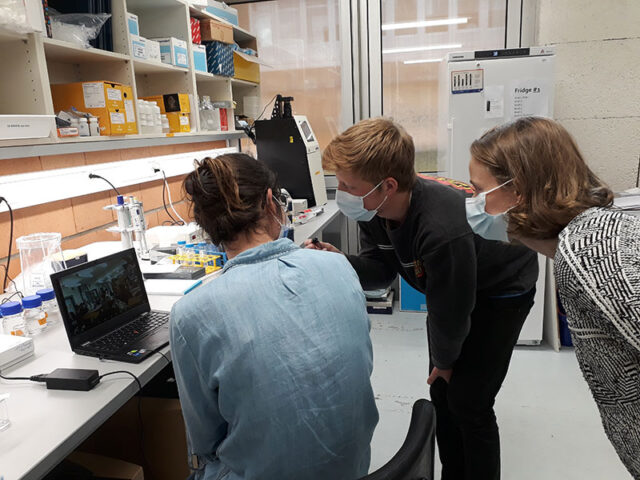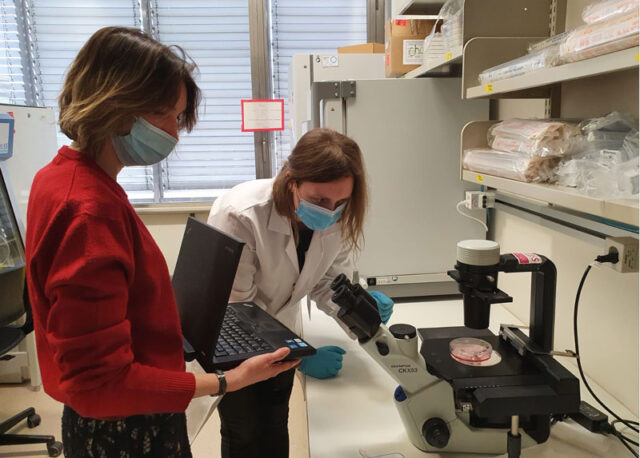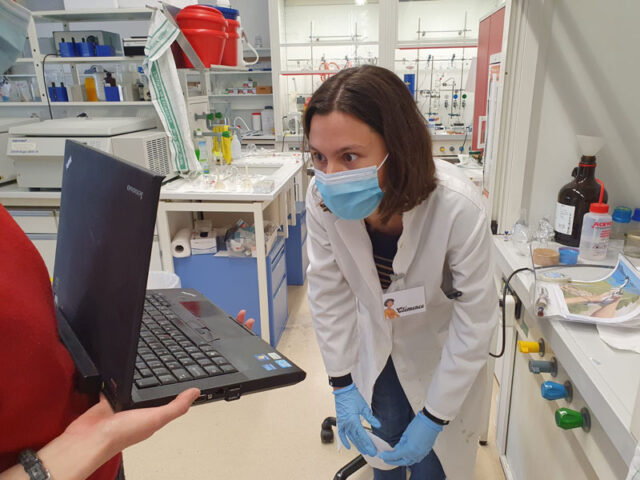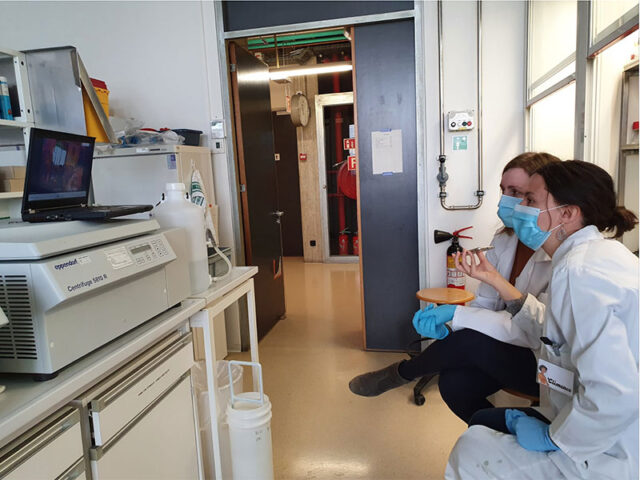Let me start by coming clean: I am usually not the most vocal advocate for digital outreach actions. However, these past few months, in the context of the Covid crisis, I decided to launch a virtual outreach initiative to maintain a link between NCCR researchers and school children. And I must admit that I was happily surprised by the enthusiasm ‘1 scientist, 1 class’ raised! If like me you hesitate to launch or take part in a digital outreach project, here is why I changed my mind. You may find a few reasons to try too!
(Fair warning: I love sayings and quotes.)
When life hands you lemons…
After 14 months of on-and-off lockdowns, I do not need to explain the impact of the pandemic on our professional lives. Particularly when my job is (was?) to meet and communicate science to the general public.
After a few months of planning future events, re-openings and more generally hoping for a ‘return to normal’, I felt the urge to stop anticipating and start acting. And even if I had originally chosen, by inner conviction, to focus on ‘real-life’ science communication, the simple truth was that this was not the best way (or indeed, not a way at all) to do my job anymore, at least for the time being. So simply from a rational and practical angle, digital was the way to go!
I had been planning to organise lab visits: I would organize digital lab visits.
Two heads are better than one
To get started, I asked a primary school teacher who I had worked with on other projects, if she would be interested in participating with her class in a ‘virtual lab visit’. Who is better suited than your target audience to give you feedback on your ideas? She was interested, but rightly felt that the ‘one-shot’ virtual visit of a lab could be improved. With her help and input, we built on that first idea to come up with a short project that included practicing scientific investigation in the classroom.
I was very happy about this new format, as it put the children in an active position and not only as ‘passive recipients’ of science, which is one of my biggest reservations about digital formats. We were ready for the pilot test, with my teacher partner’s class, and maybe one or two of her colleagues.
Where one door closes, another opens
The pilot test was a great success! Not 1 scientist, but a team of 2, met with a class of 5-year-olds, and explained in a lively and creative way their work on a cellular signalling pathway (‘the language of cells’) and on tagging lipids (‘like a tracking bracelet on a wild animal’).
The children had a lot of questions:
- How do you know that cells need warmth to grow?
- If your lipid falls on the floor, how do you retrieve it, as it is too small to get it with tweezers?
- Can cells attach to anything, or only to a body?
- How do you get lipids into a cell?
- and many more…
The lab visit was so real to them, that some parents thought their child had gone in person to the University of Geneva! The teacher also noted how much the students were motivated to take up a challenge given by real scientists.
Word spread, and as it turned out, the ‘1 scientist, 1 class’ initiative raised a lot more interest than I had anticipated. In a few weeks, more than 40 classes wanted to register, and a dozen scientists from the NCCR Chemical Biology had signed up to participate. Clearly, this project met wishes from both parties!
With the geographical barrier down, this digital initiative allowed us to reach different audiences. Our only limit was the time difference, and this is how we ended up working not only with Swiss classes, but also with a school in Kinshasa, DR Congo!
“Continuous improvement is better than delayed perfection.” – attributed to Mark Twain
Overall, the feedback from actors involved in this project has been very positive. The digital format allows for flexibility. Classes can discover rooms or equipment that we could not physically show to 20 lively children. It also takes less time for everyone, including the scientists. As one researcher said: “30 minutes! It could almost be a coffee break!” I loved this remark, and I plan to use it as a recruitment slogan in the future: “Spend your coffee break talking to 10-year-olds about science!”
Of course, ‘1 scientist, 1 class’ is still in its first steps, and we have a lot of room for improvement. My initial ‘DIY’ approach of the registration process, which I thought would be fine for 3-4 classes, is not adapted to our actual situation, and needs to change for the next school year to save everyone a lot of back-and-forth about planning. Also, according to teachers’ feedback, I am looking into technical solutions to deliver a better quality of sound and help students stay focused.
The lower level of interaction, compared to a real-life meeting, remains the main inconvenient, particularly for the scientists. But the upside of this is that it motivated some of them to suggest a hybrid format for next year (or whenever possible). Thanks to them, ‘1 scientist, 1 class’ will keep evolving and improving!
Conclusion
In the last two weeks only, around 150 students aged from 4 to 19 got to talk with an NCCR scientist and ask their questions about science, research, and career paths:
- Why do you study this and not something else?
- Do you have to get good grades to be a scientist?
- Is someone else in your family a scientist?
High-school seniors had a sneak peek of high-level research before entering university. As one teacher said:
It is inspiring for students to see how theoretical knowledge acquired in the classroom translates to current research, and to witness the enthusiasm of a young researcher. »
For this I would like to give huge thanks to our amazing scientists Charlotte, Clémence, Céline and Balázs for their creativity and the energy they put into this project. Thank you for being our lead climbers!
I also wish a warm welcome to Juliette, Julius, Jenny, Aurélien, Amrit, Alexandra, Nils and Argy, who will soon meet their first classes!
So, what about you? What do you think about digital outreach initiatives? What formats would you like to set up or participate in?
Feel free to discuss in the comments section below!
The ‘1 scientist, 1 class, 1 hour’ format
Target audience: school classes, from primary to high school
- 1st step: Meeting by videoconference between a scientist of our research center and a class (30 minutes)
The scientist introduces him/herself and offers a virtual tour of the lab to the class.
After a Q&A session, the scientist gives the class an ‘experiment challenge’ (feasible with cheap and easy-to-find materials). - 2nd step: Scientific investigation in the classroom
The class have one week to form hypotheses, run experiments and get results. They can also use the week to think about questions to ask the scientist. - 3rd step: Second meeting by videoconference (30 minutes)
The class present their results. The scientist answers questions and shares the protocol and/or advice on how to address the ‘experiment challenge’. - 4th step: Running the experiment in the classroom (optional-depending on the challenge)
The class follow the protocol given by the scientist to run the experiment.





Leave a comment
The editors reserve the right not to publish comments or to abridge them.